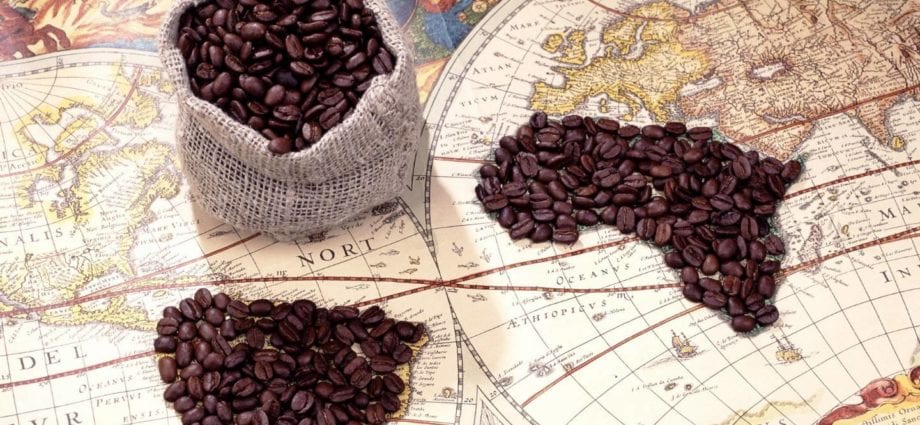Coffee has been known since ancient times; it is from Ethiopian Kaffa that it originates and its name. It was in this city that the grains of coffee trees were discovered, which the local goats loved to eat. The grains had an invigorating effect on them, and the shepherds quickly tidied up the idea for themselves, using coffee to tone them up. Energy grains were also used by nomads passing through Ethiopia.
Coffee began to be grown in the 7th century on the territory of modern Yemen. First, the grains were cooked, pounded, and added to food as a seasoning. Then they tried to make tinctures on raw coffee beans, brewed the pulp – the drink was geshir, now this method is used to make Yemeni coffee.
In the historical period, when the Arabs came to Ethiopian lands, the right to use the fruits of coffee trees passed to them. At first, the Arabs did not come up with anything new how to grind raw grains, mix them with butter, roll them into balls and take them on the road to maintain strength. Nevertheless, such a snack was healthy and tasty, because raw coffee beans have the properties of a nut, and in addition to cheerfulness, this food perfectly satisfies the traveler’s hunger.
Centuries later, coffee beans have finally figured out how to roast, grind and prepare the drink as we know it today. The 11th century is considered to be the starting point for making a coffee drink. Arabian coffee was prepared with herbs and spices – ginger, cinnamon, and milk.
Turkish coffee
In the middle of the 15th century, coffee conquers Turkey. Enterprising Turks do not miss the opportunity to make a business on coffee and open the world’s first coffee shop. Due to the high popularity of coffee houses, church officials even cursed this drink in the name of the prophet, hoping to reason the believers and return them to temples for prayer, instead of sitting for hours at the coffee ceremony.
In 1511, the use of coffee was also prohibited in Mecca by decree. But despite the ban and fear of punishment, coffee was drunk in large quantities and constantly experimented with the preparation and improvement of the drink. Over time, the church changed from anger to mercy.
In the 16th century, the Turkish authorities again became concerned about the craze for coffee. It seemed that coffee had a special effect on those who drank it, judgments became bolder and more free-spirited, and they began to gossip about political matters more often. Coffee shops were closed and coffee was again banned, right up to executions, who came up with everything more sophisticated and sophisticated. So, according to scientists, a coffee lover could be sewn up alive in a coffee bag and thrown into the sea.
Nevertheless, the art of coffee was growing, ordinary huts where drinks were prepared began to turn into cozy coffee shops, recipes changed, became more and more diverse, additional service appeared – with a cup of coffee one could relax on comfortable sofas, play chess, play cards or just talk heart-to-heart. The first coffee shop appeared in 1530 in Damascus, 2 years later in Algeria and 2 years later in Istanbul.
The Istanbul coffee house was called the “Circle of Thinkers”, and it is thanks to it, there is an opinion, that the famous game of bridge appeared.
The atmosphere of coffee houses, where it was possible to hold meetings, unhurried conversations, negotiations, has been preserved to this day.
Turkish coffee is traditionally prepared in a vessel – a Turk or cezve; it tastes very strong and bitter. He did not take root like that in Russia. Here he appeared during the time of Peter I, who believed that drinking coffee helps to make important decisions and forced all his entourage to do so. Over time, drinking coffee began to be considered a sign of good taste, and some even had to endure its taste for the sake of status and compliance with the new fashion.
Coffee varieties
There are 4 main varieties of coffee trees in the world – Arabica, Robusta, Exelia and Liberica. Trees varieties Arabic reach a height of 5-6 meters, the fruits ripen within 8 months. Arabica grows in Ethiopia, some are grown by local entrepreneurs, and some of the harvest is harvested from wild-growing gardens.
Robusta – coffee with the highest caffeine content, it is mainly added to blends for greater strength, but at the same time, robusta is inferior in taste and quality to Arabica. In cultivation, robusta trees are very capricious and require careful care, however, their yield is very high.
African liberica resistant to various diseases, and therefore it is much easier to grow it. Liberica fruits are also found in coffee blends.
Excelsa coffee – trees up to 20 meters high! The most, perhaps, little-known and not often used type of coffee.
Instant coffee appeared in 1901 with the light hand of the American Japanese Satori Kato. At first, the drink was slightly aromatic and tasteless, but very simple to prepare, and therefore people began to get used to its unsaturation. For example, in military campaigns such coffee was much easier to prepare, and caffeine, nevertheless, played its tonic role.
Over time, the recipe for instant coffee changed, in the 30s, the taste of coffee was finally brought to mind in Switzerland, and first of all, it became popular again among the warring soldiers.
In the middle of the 20th century, a new way of making coffee with a coffee machine appeared – espresso. This technique was invented in Milan at the end of the 19th century. Thus, the preparation of real tasty and strong coffee became available not only in coffee houses, with the advent of home coffee machines, this invigorating drink has firmly settled in almost every home.










